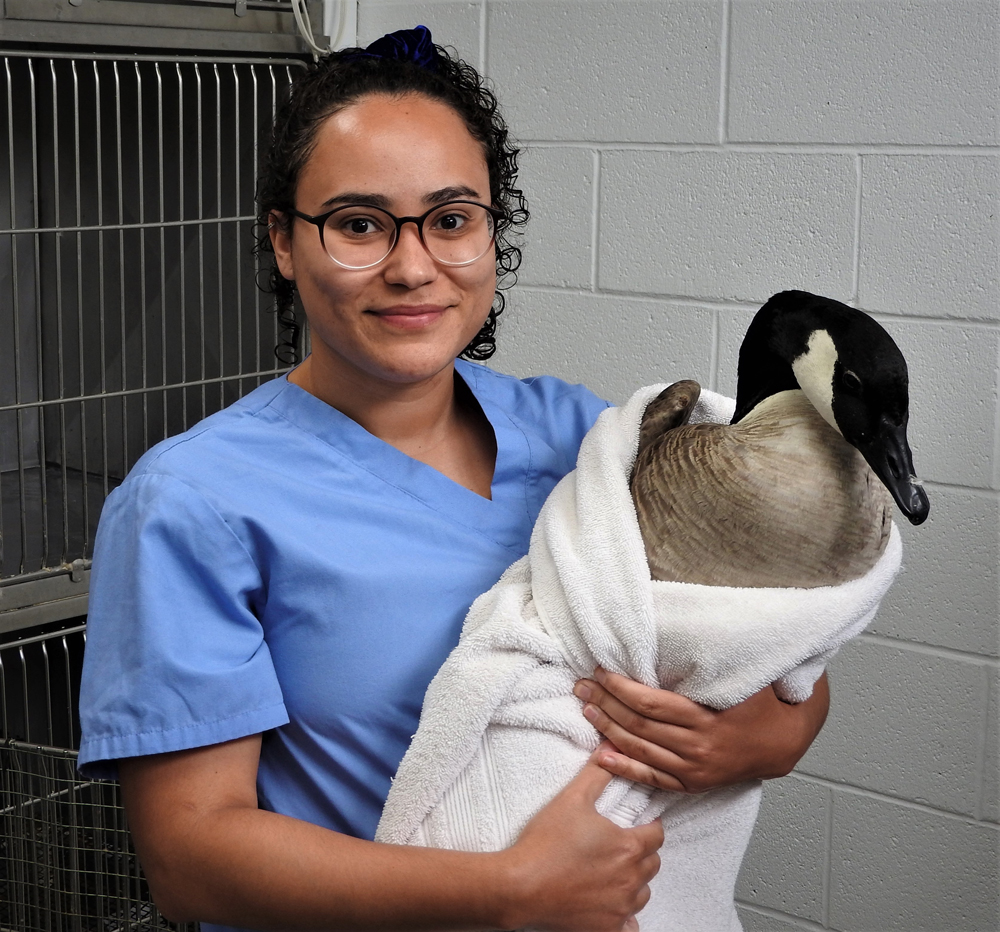
For veterinary student Clarice Souza, a summer internship at Ohio Wildlife Center’s Wildlife Hospital offered not only the chance to expand her skills in animal care, it also provided a unique window to build on baseline research about the impact of domestic animal interactions on wildlife populations.
Souza, a New Jersey native, will complete her degree at Ohio State University’s College of Veterinary Medicine in 2023. She has focused many of her out of classroom experiences on exotic and wildlife animal care, which is a career goal. During internships at the Raptor Trust, Wild Baby Rescue, and Turtle Back Zoo, all in New Jersey, she participated in rehabilitation protocols, husbandry and care for a range of species.
During her summer research project at Ohio Wildlife Center’s Wildlife Hospital, she investigated the relationship between domestic animal interactions and wildlife and the consequent mortality rates and outcomes for the injured patients. She analyzed four years of hospital data, from 2016-2020. Among the findings: she determined that 18 percent of all wildlife patients admitted to the hospital after an interaction with a domestic animal did not survive their injuries.
The research also highlighted that dogs contributed to higher mortality rates for injured wildlife than cats. While 8 percent of wildlife injured by cats die, about 10 percent of wildlife patients admitted after in interaction with a dog do not survive.
The species most targeted by domestic animals were eastern cottontail rabbits, with the injuries commonly presented as flesh wounds, musculoskeletal injuries and neurological injuries.
According to Souza, the findings highlighted that “wildlife admitted to the Center face higher mortality rates if admitted because of a domestic animal interaction as compared to other reasons for being admitted to the hospital.”
“These are important findings because these injuries are all preventable,” Souza noted. “Pet owners have a responsibility to keep pets supervised.”
“If pets are interacting with wildlife, especially wildlife that is known to carry zoonotic diseases such as rabies, salmonellosis, and parasitic diseases, they can expose their human caretakers to the same diseases,” she noted. “Additional research is needed on how to effectively educate the public on the importance of maintaining cats indoors and supervising dogs closely when they are outside to avoid interactions with wildlife.”
Souza presented her research in August at the National Veterinary Scholars Symposium. Her advisors for the project were Dr. Jaylene Flint of the OSU College of Veterinary Medicine and Dr. Melinda Marksz, the lead veterinarian at the Wildlife Hospital.
Souza noted that pet cats are often blamed for contributing to the decline of birds and small mammals, but that very little research currently exists on the relationship between dogs and wildlife.
“This data from the Wildlife Hospital shows that dogs may contribute as much or more to the many causes of wildlife decline,” she said. “Researchers should look more closely at how dogs influence the ecosystem in the United States.”
While shadowing Dr. Marksz at the Wildlife Hospital and assisting the staff, Souza said she gained great insight into the rehabilitation process within a setting that has such a high volume of patients. She noted the homecare system was an impressive way to address the challenges of the pandemic and the large numbers of babies and orphaned animals that were brought to the hospital in the last two years.